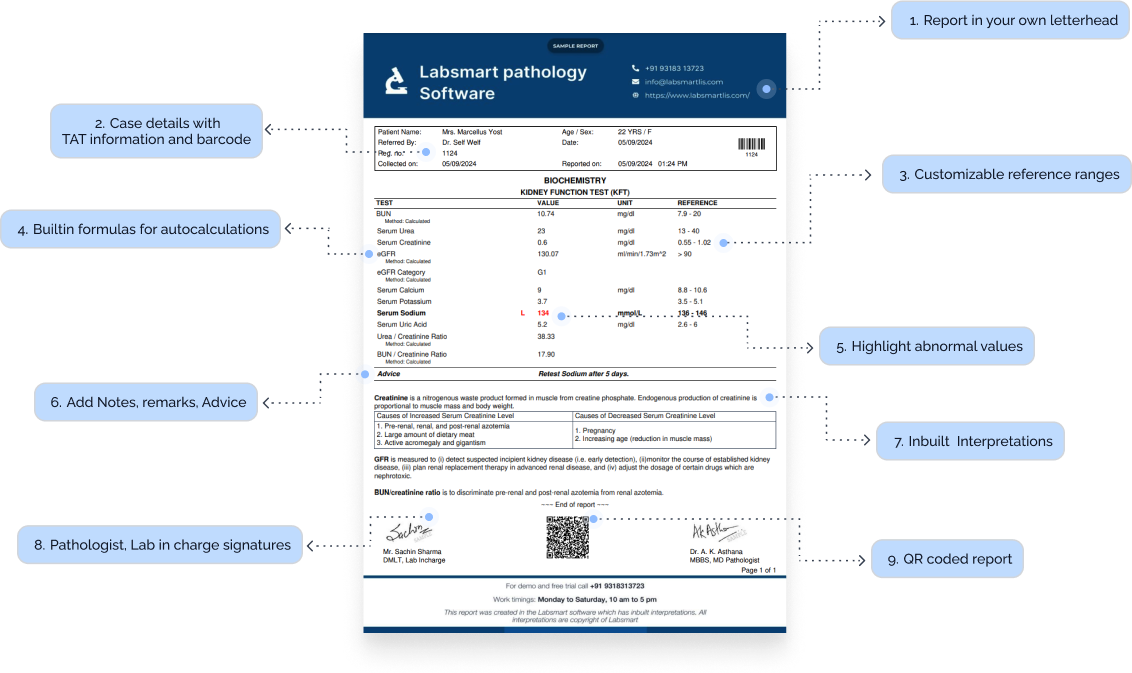
Join a free live demo now!
See all features live
Understand the benefits
Get your questions answered
No purchase pressure

What is Rheumatoid Factor, RA (Quantitative) ?
The Rheumatoid Factor (RA) Quantitative test is a blood test used to measure the levels of rheumatoid factor, an antibody produced by the immune system that can attack healthy tissues, particularly in the joints. Elevated levels of rheumatoid factor are often associated with autoimmune conditions, especially rheumatoid arthritis, a chronic inflammatory disorder affecting the joints. The test quantifies the amount of rheumatoid factor in the blood, providing a numeric value that helps assess the severity or progression of autoimmune activity. While a high RA factor is commonly linked to rheumatoid arthritis, it can also be elevated in other autoimmune or inflammatory conditions and even in some healthy individuals. This test is typically ordered when a patient shows symptoms suggestive of rheumatoid arthritis, such as joint pain, stiffness, swelling, and fatigue. It is also used to support the diagnosis of other autoimmune diseases, like Sjögren's syndrome or lupus, or to rule out other conditions. While a positive RA factor indicates the presence of rheumatoid factor, it is not definitive for diagnosing rheumatoid arthritis, as other tests and clinical evaluations are often necessary to confirm the diagnosis and determine treatment plans.
Rheumatoid Factor, RA (Quantitative) Report Format: Breakdown
Here’s what an ideal Rheumatoid Factor, RA (Quantitative) report format should include:
Header Information:
- Patient Details: Full name, Age, Gender, and ID.
- TAT information: Timestamp for both sample collection and report generation.
- Doctor's Information: Name of the referral doctor, if applicable.
Test Results Section:
-
Patient's results
As obvious as it is, a test report should definitely have the patient's test result.
-
Result's Unit
The unit of the test result must be mentioned correctly in the report. Rheumatoid Factor, RA (Quantitative) test is generally reported in “IU/mL”
-
Rheumatoid Factor, RA (Quantitative) Normal Value / Reference Range
The report must have the normal Rheumatoid Factor, RA (Quantitative) range. It can differ slightly based on the reagents used by the lab and other internal factors, but common Rheumatoid Factor, RA (Quantitative) ranges are:
For gender, 12 -100 years of age: 0 - 20
Interpretations
Nowadays, most labs prefer to add interpretations to the reports, making the report more patient-friendly. Labsmart software has interpretations of all routine test pre-filled in the software.
Footer Section:
-
Certifications:
Display any relevant accreditations (e.g., NABL, ISO), adding to your lab's credibility.
-
Pathologist and technician signature:
It's mandatory to add a Pathologist and technician signature to the report.
RA (Quantitative) Interpretation
In Labsmart software, this is the inbuilt interpretation for Rheumatoid Factor, RA (Quantitative)
Importance of adding interpretation to reports:
It's very helpful to add interpretation in reports as it makes the reports more patient friendly and also helpful to doctors in some cases. Moreover, presently most labs prefer providing reports with interpretation. Thus, adding interpretation to report will help your lab stay at par with other competitor labs.
Labsmart Pathology Reporting Software
(With Interpretation and auto calculations)
- Billing
- Reports with Interpretation
- Auto calculation where needed
- Check daily business
- WhatsApp reports

1.5 Crore+
Reports printed & delivered online
1250+
Labs Active
10+
Countries
RA (Quantitative) MS Word format
Download the Ms word editable Rheumatoid Factor, RA (Quantitative) report format for offline reporting.
Download word format



















